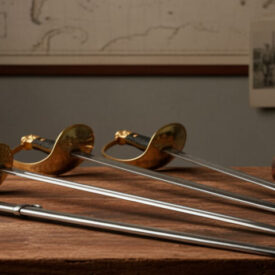Willlian Wallace (1270-1305) was a well-known military scottish leader, though his origins were humble he achieved to lead scottish troops against King Edward the Ist of England also known as Edward Longshanks.
After defeating Count of Surrey, who had an army of 300 knights and 10.000 soldiers, in Stirling Bridge battle; he was named “Guardian of Scotland”. Among the most famouys campaigns he led, we must mention the one related to the city of York, in the north of England, which one he could finally conquer.

A success that forced King Edward to go to attack him in his domains, Falkirk. Scottish soldiers to balance armies they used a particular technique called “burned ground”, which consisted in not leaving any food for soldiers or horses for weakening the english army. This strategy had a moderate success, given that it stopped the advance of english army in Scotland.
King Edward ordered his heavy cavalry to attack scottish army, but provided with long spears called “Schiltroms” they managed to resist the english cavalry. Unfortunately, their victory hope disappeared because of the english archers who made them run away. William Wallace could also escape safe and sound what forced to look for the help of other european kingdoms to suppoortt him in his fight.

Regrettably, he was betrayed by his own servant in 1305, being accused of treason to the english crown. After being sentenced to death, he was dragged through the city at the heels of a horse, hanged, drawned and quartered. The parts of his body were displayed, separately in several points of England, as a warning for his followers.
The weapon used by William Wallace was a big sword, with more than a metre and half of length, nowadays we can admire replique of this sword in the William Wallace statue, in Aberdeen.
It’s a huge sword similar to those which were used in those days, speficically a two hand sword with a singular blade. They were more useful to wound an enemy due to its size, given that they could used also a spear which drilled a soldier’s armours.
During the fabrication of this kind of swords it was necessary to be aware of its balance, because of the fact that its proportions had to be perfect for not affecting the effectiveness of the weapon. They were made of steel and they had sharped edges, except for one area next to the handle which blocked the enemy’s hits.
It was a weapon designed to infantry’ s use, given that it was really hard to handle it by horse. When a soldier faced a group of infantry’s members, it became also a very effective weapon tahnks to its long blade which could be used to wound several enemies with a single hit. They could also hurt a troop of lancers really bad, because they achieve to separate its members what was the basis of their strength.
This weapon’ s handle required two hands, which impeded to hold a shield too. That’ s why soldiers wore armours to resist their enemies attacks.
Maybe, because of their dimensions we could think that they were slow weapons, but most of the times soldiers could handle them as easy as one and a half hand swords.
Cinema and comics have tried to oversize these swords, representing them with a length of two metres and a width of 30 cms, what obviously made impossible an easy handle.
If we want to know more about this sword and William Wallace’s figure, it’ s mandatory to watch Braveheart (1995). A movie where Mel Gibson plays the leading role and which could show us some relevant aspects of medieval Scotland.













